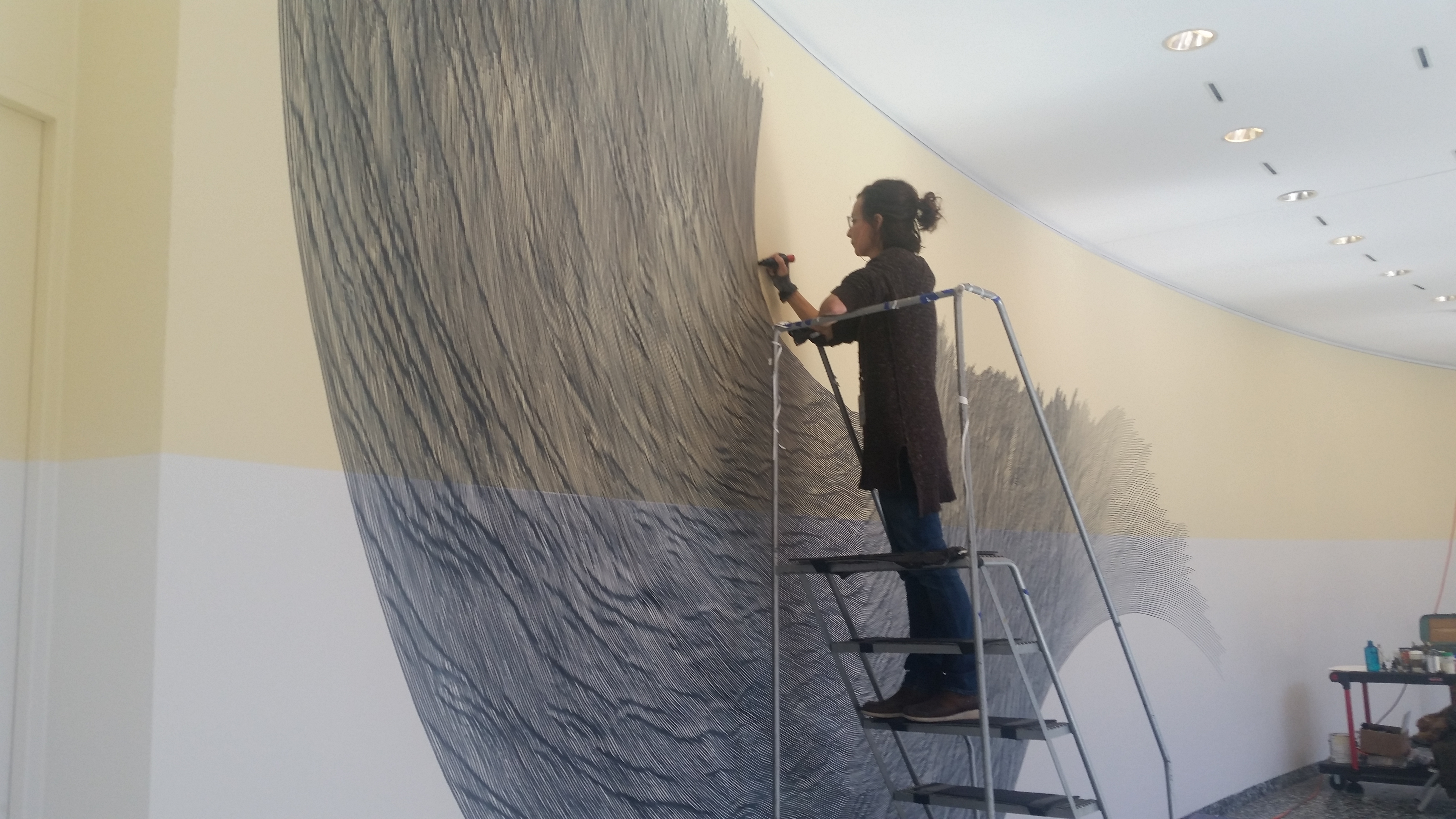2.1: Visual Elements of Art-Line
- Page ID
- 156844
Overview
Line is the first-order element of design. A line is an infinite series of points that are arranged in a direction. The direction of a line may be straight (unchanging) or curved (changing). All kinds of objects are linear or predominantly formed by using lines. Calligraphy, or “beautiful writing,” is one popular use of line. The character of line in writing has two main functions. First, the linear figure or shape of a written symbol denotes its meaning. Second, the manner in which the figure is created can be seen as expressive in itself. A tughra, or the calligraphic signature of a sultan, and the re- fined text of Arabic calligraphy are renowned for their expressive beauty, as are many works of Asian script. In many writing cultures, the beauty of the script is as important as the message the script contains. (Figure 2.35)
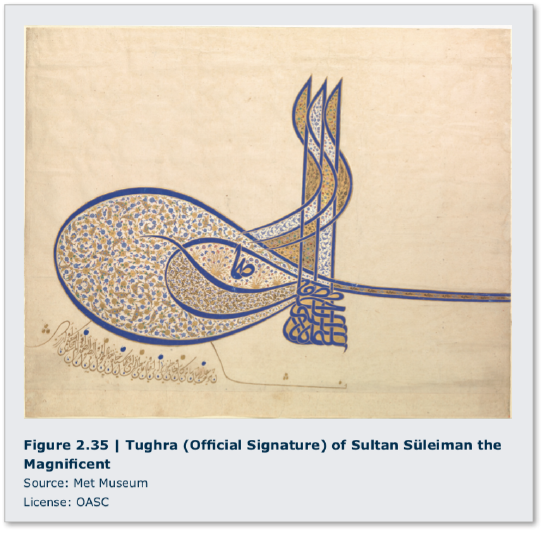
Types of Lines
Actual Line, Contour Line, Implied Line, Directional Line, Communicative Line,
Actual Line:
- Actual lines are lines that are physically present, existing solid connections between one or more points.
- Richard Long's 'A Line Made by Walking' is documentation of Richard Long's performance.
- In this work, he creates a short line in nature. Long created this work by repeatedly walking back and forth in a field made of grass. After that, Richard Long photographed this from an angle at which light enhanced the look of the line.
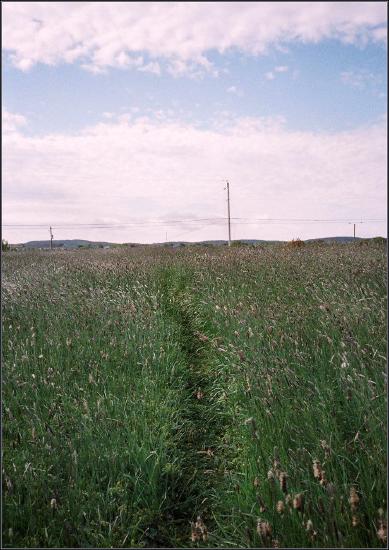
"Path through the grass" by Felip1 is licensed under CC BY-NC 2.0.
Contour Line
- Contour is the line where differing areas meet and form edges. A contour is an edge or profile of an object, but is not necessarily the complete outline of a shape.
- Human visual perception includes an enhanced ability to detect edges in nature. Contour lines follow the shapes of objects where they stand out from the backgrounds.
- Contour lines can suggest a volume in space by providing clues about the changing character of a surface.
- The drawing by Henri Matisse was created by using contour lines.
- Solid continuous lines represent complex three-dimensional shapes and surfaces 4
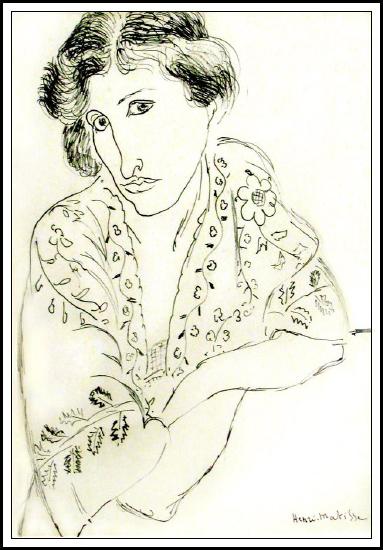
"Portrait de femme, Henri Matisse (musée Maillol)" by dalbera is licensed under CC BY 2.0.
Implied Line
- Some lines are not drawn at all. Instead, they are implied or suggested by an intentional alignment of shapes.
- Implied lines are not actually drawn, but we can connect the dots to create the lines in our minds. Implied lines are an illusion that gives the impression of line where there is no continuous mark.
- Implied lines give works of art a sense of motion and keep the viewer engaged in composition
- Leonardo da Vinci’s Virgin of the Rocks contains wonderful examples of implied lines.
- Here, the implied lines are sightlines, which guide us throughout the image. These help us know where to look and show us what is important in the painting. Follow the gazes of the figures as they look and point at one another. The angel in the red cape to the right looks out at us, and then points at the infant John the Baptist, on the left. He looks at the infant Jesus, who in turn looks back again at him. Above, Mary looks down at Jesus and also gestures toward him with her hand. [6]

Leonardo da Vinci. The Virgin with the Infant Saint John the Baptist adoring the Christ Child accompanied by an Angel ('The Virgin of the Rocks').1506-8, Oil on poplar, thinned and cradled Display, 189.5 x 120cm. "Leonardo, The Virgin of the Rocks" by profzucker is licensed under CC BY-NC-SA 2.0.
Directional Line
- Artists can use lines to direct a viewer’s attention to a particular part of a work. Goya in the Third May uses implied lines to direct the viewer’s gaze.
- The bright white shirt of the central figure takes the attention right away.
- The actual line directs the viewer's eye from top left to mid-right through the hillside.
- An implied line created by the feet of the soldiers leads right to left.
- A shadow at the bottom continues in the same direction.
- The strong horizontal of the rifles draws attention to the victims. 4
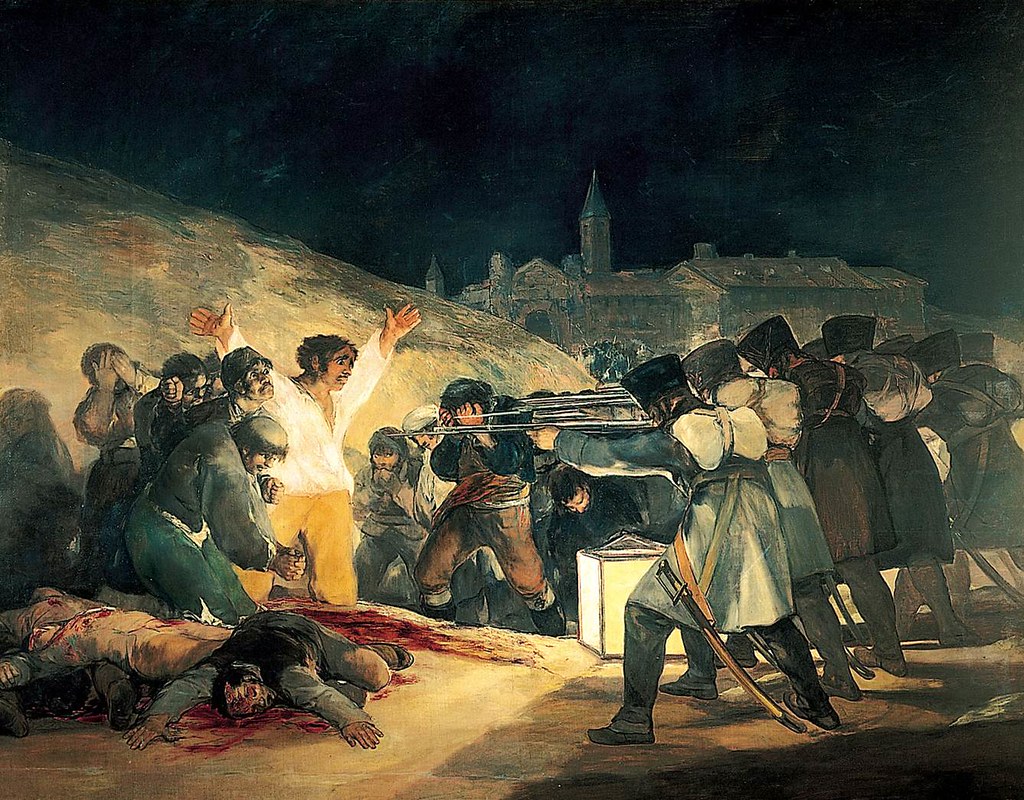
Francisco Goya, The Third of May, 1808, 1814. Oil on canvas, 8’4⅜” x 11’3⅞”.Museo Nacional del Prado, Madrid, Spain. "Third of May" by KCC246F is licensed under CC BY-ND 2.0.
Communicative Line
- Line has expressive content. By its nature, a line compels the viewer to follow along its path. The character of the line can control the direction, speed, and attention of the viewer. The movement of a line can be curved or angular. It can progress smoothly or with a staccato rhythm. A line can be thick or thin, pale or bold. These qualities are “read” rationally and emotionally; thus, line can have an expressive and emotional content that can often be found by viewer introspection
- Vertical lines tend to communicate strength and energy
- Horizontal lines can suggest calmness and passivity
- Diagonal lines are associated with action, motion, and change
- Van Gogh's use of line is loose and free, almost out of control. Van Gogh’s line is produced by his own hand. 4,5
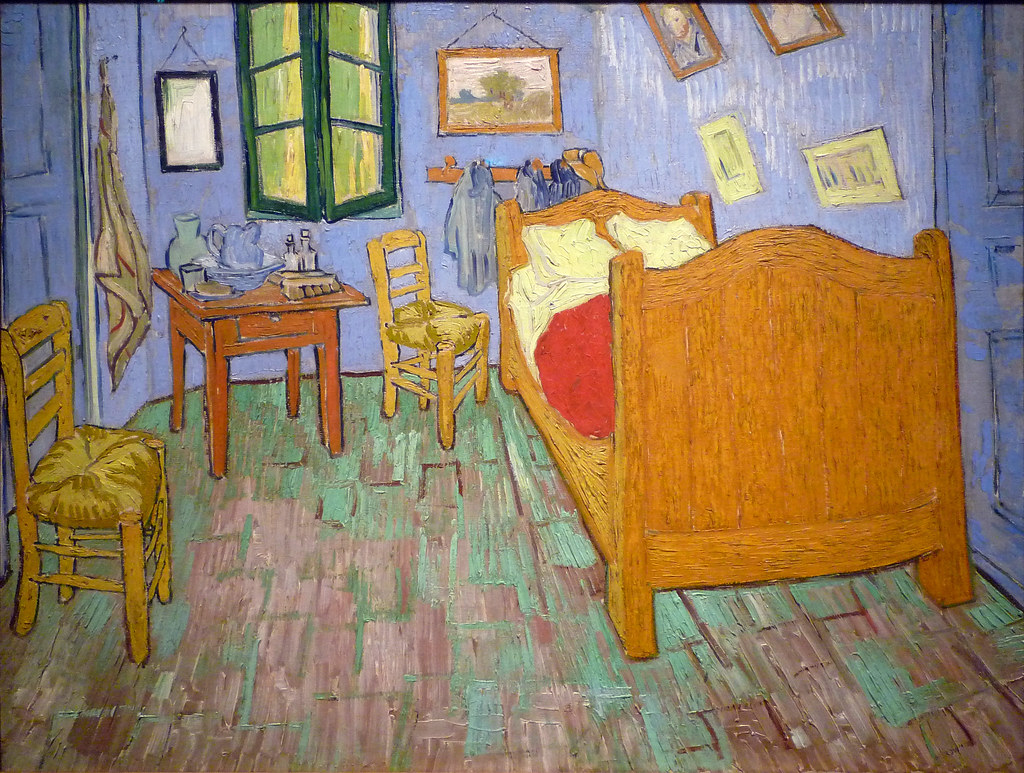
Vincent van Gogh, The Bedroom, 1889. Oil on canvas, 28¾ × 36¼". Art Institute of Chicago, Illinois. "Van Gogh, The Bedroom" by profzucker is licensed under CC BY-NC-SA 2.0.
- Sol LeWitt employs line in his work too.
- Sol LeWitt's line is precise, controlled, mathematically rigorous, logical, and rationally organized whereas Van Gogh’s line is imprecise, emotionally charged, and almost chaotic. 5
"2013-05 München 171 Lenbachhaus, Sol Lewitt, Wall Drawing" by Allie_Caulfield is licensed under CC BY 2.0.
|
|
- Line is the most basic visual element. Lines can be used to define shapes and figures, but also to indicate motion, emotion, and other elements
- Lines are the most fundamental element artists use. Lines organize the visible world.
- The outline or contour lines create a border or path around the edge of a shape, thereby outlining and defining it.
- The line can also express emotion, the feelings of the artist. Such lines are said to be expressive. Expressive lines refer to curved marks that increase the sense of dynamism of a work of art.
- Actual lines are lines that are physically present, existing as solid connections between one or more points.
- Implied line refers to the path that the viewer's eye takes as it follows shapes, colors, and forms along any given path.
Source
- Meet the Artist: Linn Meyers. Hirshhorn Museum and Sculpture Garden. www.hirshhorn.si.edu
- Linn Meyers Website. https://www.linnmeyers.com/info-bio.php
- Hashmi, Zarina, Richard Long's A Line Made by Walking. Tate Museum. https://www.tate.org.uk/tate-etc/iss...e-made-walking
- DeWitte, Debra J., Larmann, Ralph M.,and Shields, M. Kathryn. Gateways to Art: Understanding the Visual Arts, Third Edition. 2018
- Sayre, Henry M. World of Art, 8th Edition, 2016. Pearson
- Khan Academy. Line as an art element. https://www.khanacademy.org/humaniti...rt-apah/a/line
- Pamela Sachant, Peggy Blood, Jeffery LeMieux, & Rita Tekippe University System of Georgia via GALILEO Open Learning Materials



